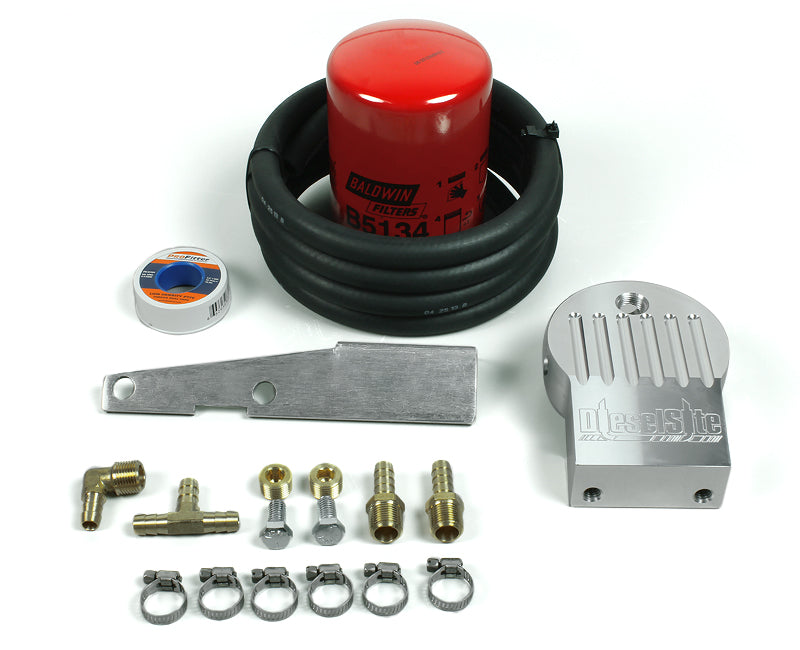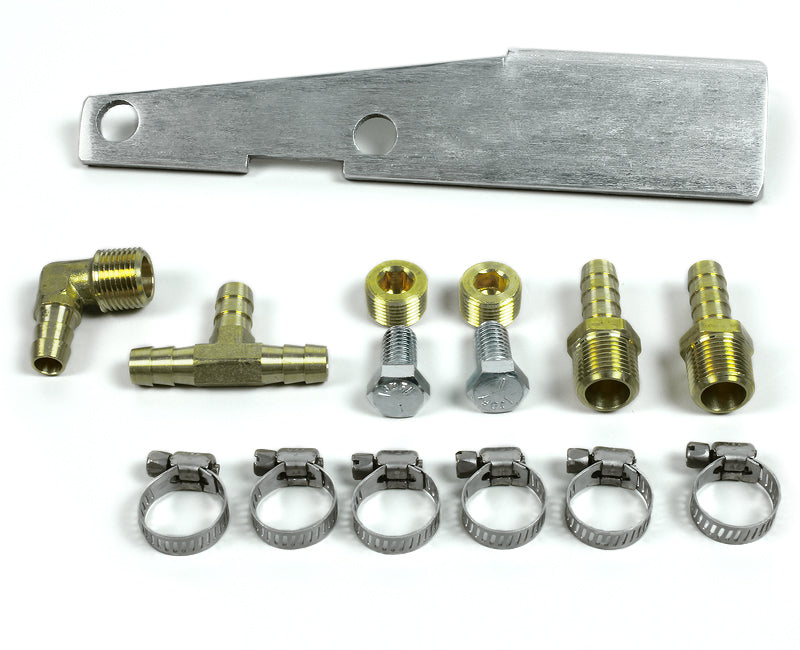Contact Us
Based on the measurements you provided, we couldn’t match any products. Please provide your email and phone number, and we will reach out to you during business hours.
SKU:CFIK97 + CFSO
1994-1997 Ford 7.3L PSD Coolant Filtration System
1994-1997 Ford 7.3L PSD Coolant Filtration System
Pairs Well With
DIESELSITE Coolant Filter Install Kit – Ford 7.3L Powerstroke
Protect Your Cooling System – Extend Water Pump & Radiator Life
NOTE: If you have a 1994–1995 model, see the FAQ section below for special installation considerations.
Coolant filtration is a proven solution in the heavy-duty diesel world — and it's just as critical for your 7.3L Powerstroke. Many diesel engines, including the 7.3L, are cast with sand, and not all of it is removed during manufacturing. Over time, this leftover sand leaches into the cooling system and causes premature wear to water pumps, hoses, and radiators.
The DIESELSITE Coolant Filter Kit captures abrasive materials like casting sand and precipitated SCAs (Supplemental Coolant Additives), helping prevent internal wear and extending the life of your water pump, radiator, oil cooler, and coolant lines.
✅ Key Benefits:
-
Removes abrasive particles like sand and crystallized SCAs
-
Protects water pumps, hoses, radiators, and oil coolers
-
Prevents premature cooling system failure
-
Bypass-style filter — no flow restriction or overheating risk
-
Spin-on filter design for quick, easy replacement
-
Includes all fittings, hose, and stainless clamps
-
Virtually eliminates wear from coolant contaminants
🔧 How It Works:
This is a bypass-style system that filters a small amount of coolant at a time.
It’s routed in parallel with the factory cooling system, so it doesn’t affect coolant flow or cooling efficiency.
As the filter removes debris on each pass, your system is gradually cleaned of harmful particles.
🛠️ Installation & Maintenance:
-
Installs easily with basic tools
-
Includes custom instructions for minimal fluid loss
-
Initial Filter Change Schedule:
-
Replace every 3 months for the first 9 months
-
Then, replace once per year
-
-
You’ll know the filter is due when coolant flow into the overflow tank slows or stops
🧰 Kit Includes:
-
DIESELSITE coolant filter mount
-
High-quality hoses and stainless steel clamps
-
Brass fittings
-
Spin-on filter
-
Detailed installation instructions
⚠️ Special Note for 1994–1995 Trucks:
Some early 7.3L Powerstrokes came with IDI-style cooling systems (radiator cap on the radiator instead of the overflow tank). If your truck has this setup, you can still use this kit, but you’ll need to reroute the filter return line.
✅ You’ll need a 5/8" x 3/8" x 5/8" heater hose tee to connect the return line to the heater hose going to the top of the water pump.
We can supply this tee from our store — just ask!
💬 FAQs
Q: Will this restrict coolant flow or cause overheating?
A: No. The system is routed in parallel with the stock coolant path. Only a small amount is diverted through the filter, and the filter itself acts as a heat exchanger.
Q: What happens if the filter plugs up?
A: The system reverts to normal coolant flow. You simply lose filtration until the filter is replaced — no damage or flow restriction occurs.
Q: How do I know when to change the filter?
A: Watch the coolant return line into the expansion tank. If flow slows or stops, it’s time to change the filter.
Q: How much coolant will I lose during installation?
A: Very little. Our instructions walk you through how to avoid draining the system during install.
📸 Real-World Results:
-
Photo 1: Filter removed after 3 months after a full coolant flush — filled with sand and sediment.
-
Photo 2: 7.3L oil cooler clogged with debris — proof these particles wreak havoc on internal components.
🔩 Don’t wait for failure — protect your Powerstroke now.
Whether you’ve already replaced a water pump or are trying to make your current one last, it’s never too late to install a coolant filter. Give your cooling system the defense it needs with a proven, affordable solution.









